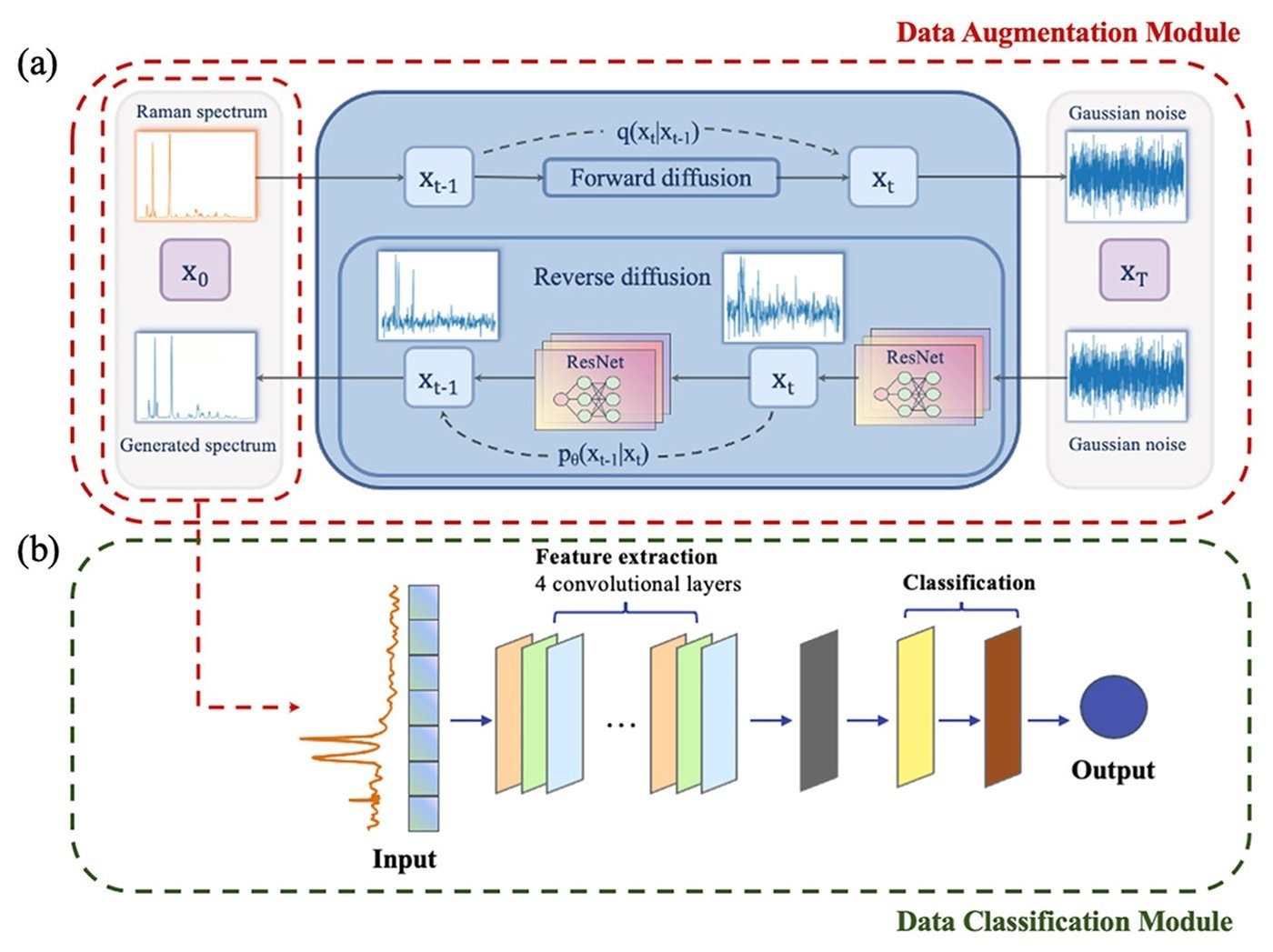Tohoku University researchers have created a deep learning-based method that significantly simplifies the precise identification and categorization of two-dimensional (2D) materials using Raman spectroscopy, according to a study published in Applied Materials Today.
 Illustration of the DDPM-based data augmentation for Raman Spectroscopy of 2D materials classification. Image Credit: Yaping Qi et al.
Illustration of the DDPM-based data augmentation for Raman Spectroscopy of 2D materials classification. Image Credit: Yaping Qi et al.
Traditional Raman analysis techniques are laborious and necessitate subjective manual interpretation. The development and study of 2D materials, which are utilized in many different applications, including electronics and medical technology, will be accelerated by this innovative technique.
Sometimes, we only have a few samples of the 2D material we want to study, or limited resources for taking multiple measurements. As a result, the spectral data tends to be limited and unevenly distributed. We looked towards a generative model that would enhance such datasets. It essentially fills in the blanks for us.
Yaping Qi, Study Lead Researcher and Assistant Professor, Tohoku University
Spectral data from seven different 2D materials and three distinct stacking combinations were fed into the learning model. The researchers developed a novel data augmentation method that employs Denoising Diffusion Probabilistic Models (DDPM) to produce more synthetic data to overcome these difficulties.
This model improves the original data by adding noise. Then, the model learns to work backward to remove the noise, resulting in a unique output consistent with the original data distribution.
By combining this augmented dataset with a four-layer Convolutional Neural Network (CNN), the research team achieved classification accuracy of 98.8% on the original dataset and, more importantly, 100% accuracy with the augmented data.
This automated approach improves classification performance while simultaneously reducing the requirement for manual intervention, increasing the efficiency and scalability of Raman spectroscopy for 2D material identification.
Qi added, “This method provides a robust and automated solution for high-precision analysis of 2D materials. The integration of deep learning techniques holds significant promise for materials science research and industrial quality control, where reliable and rapid identification is critical.”
The study presents the first use of DDPM in the creation of Raman spectral data, opening the door for more effective, automated spectroscopy analysis. Even in situations when experimental data is limited or challenging to obtain, this method allows for accurate material characterization. Ultimately, this can make it much easier for laboratory research to be turned into a tangible product that consumers can purchase in stores.
Journal Reference:
Qi, Y. et. al. (2024) Deep learning assisted Raman spectroscopy for rapid identification of 2D materials. Applied Materials Today. doi.org/10.1016/j.apmt.2024.102499